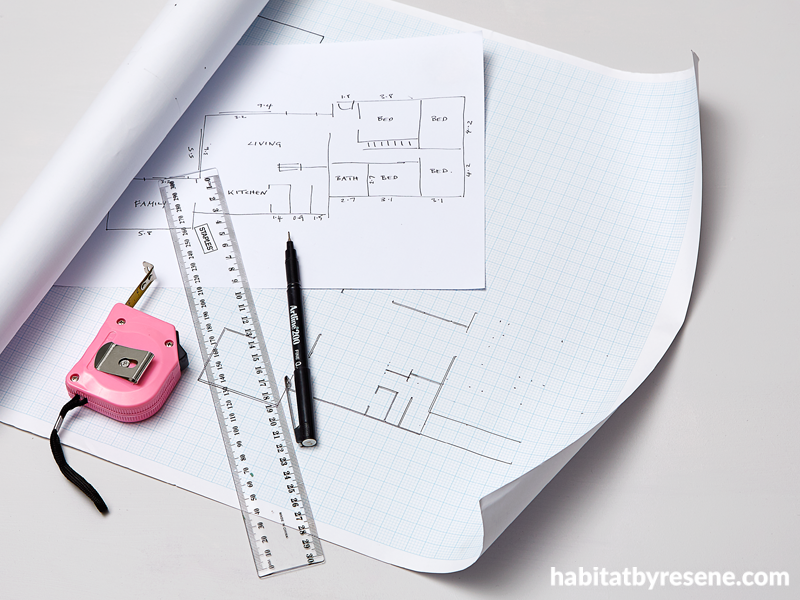
How to draw a floor plan
16 May 2016
Whether you’re planning minor renovations, rearranging the furniture or moving into a new house, a floor plan will help you make design decisions. Making a floor plan of a bathroom is, for example, hugely handy as the various fittings often have to be carefully placed.
You can easily create a floor plan without having a design degree and without any special computer software.
1.
Measure your rooms and transfer the measurements to a rough floor plan sketch. Remember to include the doors and windows.
2.
Make a scale drawing of the house on to graph paper – you can buy this from a stationery story or print it out online. Traditionally, house plans use a 1 to 50 scale, so 20mm on paper equals one metre in real life. You can use 1:100 (1cm equals 1m) which will fit more comfortably onto an A3 sheet, and be easier to work out. Each bolder box on the graph paper will represent one metre.
Count out the boxes according to your measurements and use the lines of the grid to draw your walls. The walls themselves are usually 100mm thick so make allowance for this on your plan.
3.
If the reason you’re doing this exercise is for furniture placement or bathroom layout, measure your furniture or fittings and make scale drawings of them. If you’re considering new furniture and fittings, find their measurements from the store’s websites.
4.
Make paper cut-outs of the furniture and fittings, then have fun trying them out in different configurations on your house plan.
Top tips
· When trying out your furniture placement, remember to allow for pathways. You’ll need 70-120cm for more commonly used routes (say, between the dining table and the sofa), and 40-50cm for a less commonly used route (between the sofa and the coffee table).
· The distance between a kitchen island and walls or other benches should be no less than 100cm. For two people to work comfortably in the ktichen, allow 130cm between an island and other work benches.
· Also allow for pushed-back dining room chairs and bar stools – chairs need about 20cm when tucked in, but about 50-60cm when pushed out.
Published: 16 May 2016




